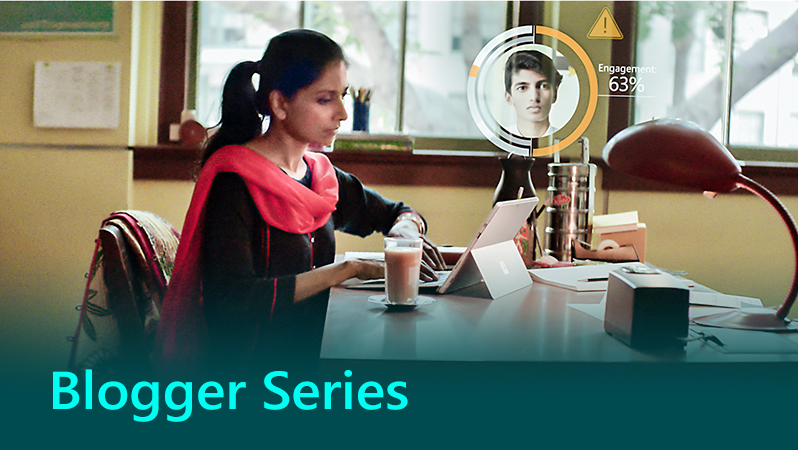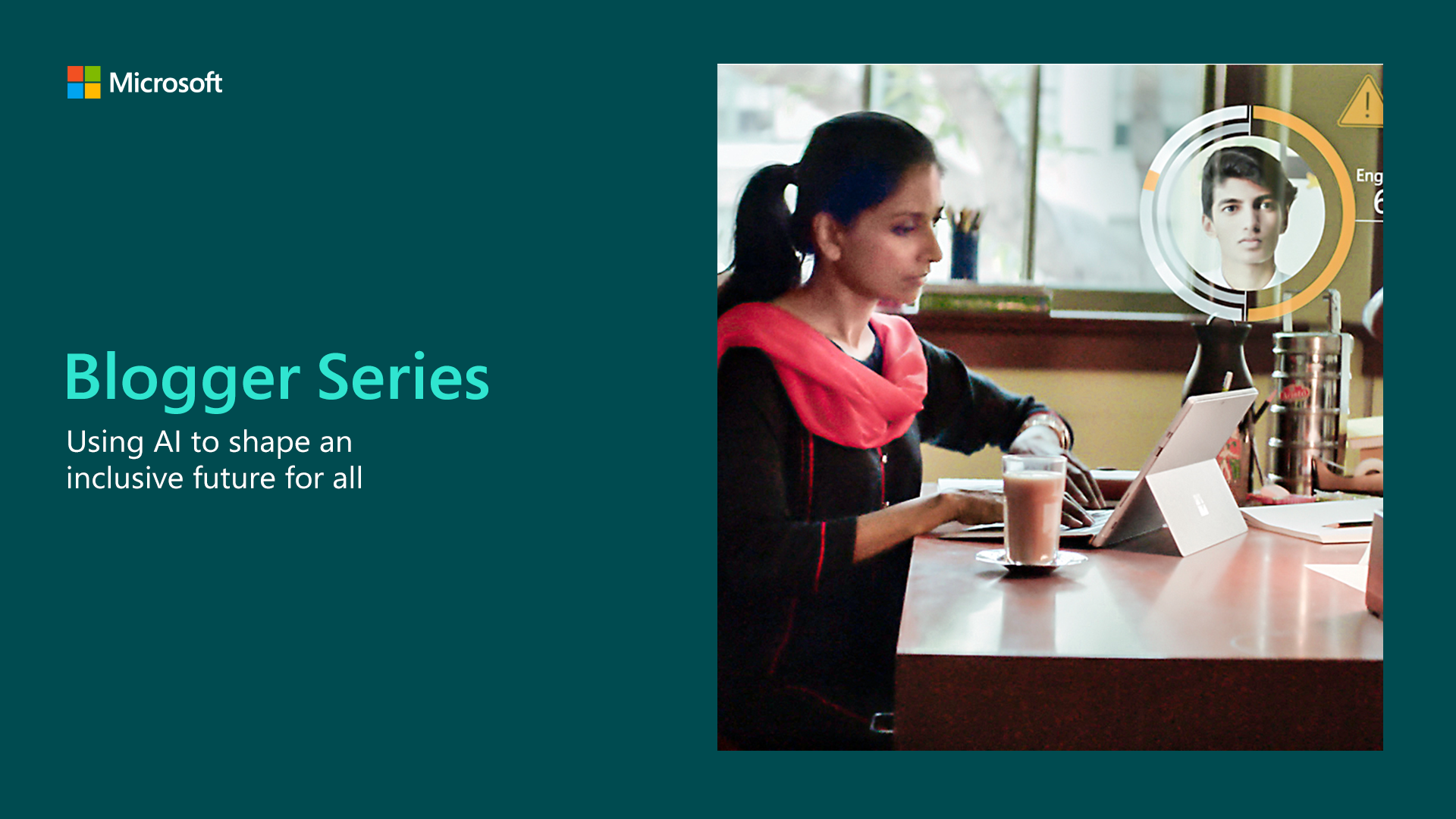
Using AI to shape an inclusive future for all
 Artificial intelligence is changing the way people live, work and learn. The use of AI allows us to be more productive and efficient with our time. But can intelligent technology be used for more? On March 28th, we will be running our next meetup event which focuses on AI for Accessibility. We have an exciting evening lined up, with topics and product showcases ranging from a self-driving wheelchair to Microsoft’s own Seeing AI project. But how can AI be used to make the world a more accessible place? I chatted to Eve Joseph, UK Responsibility Manager for Microsoft to find out more about the role of AI in accessibility.
Artificial intelligence is changing the way people live, work and learn. The use of AI allows us to be more productive and efficient with our time. But can intelligent technology be used for more? On March 28th, we will be running our next meetup event which focuses on AI for Accessibility. We have an exciting evening lined up, with topics and product showcases ranging from a self-driving wheelchair to Microsoft’s own Seeing AI project. But how can AI be used to make the world a more accessible place? I chatted to Eve Joseph, UK Responsibility Manager for Microsoft to find out more about the role of AI in accessibility.
Tell us a little about yourself
I live for adventure! Living just outside the Lake District, I get to explore the mountains and valleys with my sidekick, Robin the sprocker. I joined Microsoft just over 10 years ago on their graduate programme. I have always strived to work on projects focussed on where technology and social impact meet. My role at Microsoft allows me to work with a wide variety of organisations and individuals. From charities, think tanks, and start-ups to our own employees – all whom are looking to change the world with tech.
What is AI for Good?
AI for Good is our five-year commitment to tackling global issues leveraging the power of AI. We have already committed $115 million, a figure that’s still growing, in three key areas: AI for Humanitarian Action, AI for Accessibility, and AI for Earth. We want to work with organisations across the globe who are building AI solutions which are designed to assist humanity and are underpinned by ethical ideals that are rooted in societal values.
AI will be in our future. Therefore, it is important that we collectively develop and deploy AI in a responsible way that builds trust.
To do this, we are guided by a set of design principles. We need to ensure AI systems are: fair, reliable and safe, private and secure, inclusive, transparent and accountable.
[msce_cta layout=”image_center” align=”center” linktype=”blue” imageurl=”https://www.microsoft.com/en-gb/industry/blog/wp-content/uploads/sites/22/2018/12/AI-1024.png” linkurl=”https://www.microsoft.com/en-gb/ai/ai-for-good” linkscreenreadertext=”Find out more about AI for Good” linktext=”Find out more about AI for Good” imageid=”5437″ ][/msce_cta]
What is AI for Accessibility?
AI for Accessibility aims to accelerate the development of accessible and intelligent AI solutions. Building on recent advancements in Microsoft Cognitive Services, it helps developers create intelligent apps that see, hear, speak, understand, and better interpret people’s needs.
This programme is a call to action for developers, charities, academics, researchers, and inventors to bring their ideas to the next level! This five year, $25 million grant commitment will help us harness the power of AI to amplify human capability. It will create new and develop existing tools that support independence and productivity, as technology rapidly changes the way we live, learn, and work.
This programme will focus on three main challenges: employment, daily life, and communication and connection.
-
- Employment: The unemployment rate for people with disabilities is more than double that of people without. We see opportunities in using AI to help people develop more advanced skills in the workplace and evolve the culture around inclusive hiring.
- Daily life: We see great opportunities in building modern solutions for people with disabilities by making software and devices smarter and more contextually relevant.
- Communication and connection: Communication is fundamental to providing equal access to information and opportunities. Lack of options excludes some from employment and society. Technology can create new possibilities regardless of how a person listens, speaks, or writes.
[msce_cta layout=”image_center” align=”center” linktype=”blue” imageurl=”https://www.microsoft.com/en-gb/industry/blog/wp-content/uploads/sites/22/2018/11/Disability-and-accessibility.png” linkurl=”https://www.microsoft.com/en-us/ai/ai-for-accessibility” linkscreenreadertext=”Explore more about AI for Accessibility here” linktext=”Explore more about AI for Accessibility here” imageid=”5521″ ][/msce_cta]
Why is diversity and inclusion important in AI, specifically with regards to Accessibility?
Have you ever created a colour coded Excel spreadsheet with the common red, orange, and green design and sent it to somebody? Do you know that your customer or colleague may be colourblind? They could be interpreting that spreadsheet in a VERY different way to your expectations.
Disabilities come in many forms – both visible and unseen. In fact 70 percent of disabilities are invisible. The need for accessible technology is growing and must include everybody in its design. We bring this to life through our Inclusive Design Principles.
Inclusive design is the design of an environment, product, or service so that it can be accessed and used by as many people as possible – regardless of age, gender, and disability.
A mobile app designed for someone who is blind, could also be useful to someone who has full hands and needs to send a text message.
A person who is hard of hearing could benefit from closed captions on a video. But so would a person in a noisy environment.
[msce_cta layout=”image_center” align=”center” linktype=”blue” imageurl=”https://www.microsoft.com/en-gb/industry/blog/wp-content/uploads/sites/22/2019/03/inclusive.png” linkurl=”https://www.microsoft.com/design/inclusive/” linkscreenreadertext=”Find out more about inclusive design” linktext=”Find out more about inclusive design” imageid=”8935″ ][/msce_cta]
Why is diversity and inclusion (D&I) important to you?
Throughout my life, I have always been engaged in male-dominated environments: playing women’s rugby, studying sports science at university and now working within technology. Throughout all of these experiences, I have been lucky enough to be exposed to inclusive, forward thinking, and diverse leaders. They believe in equal opportunity and hearing everyone’s voice, allowing myself and other women to excel.
However, being lucky should not be the way we describe this type of support for any D&I area. It should not be potluck as to who you are employed by or work with.
D&I should be a priority for any leader or employee – with everyone showing leadership and holding themselves accountable. This is currently not the case and that’s why it is important to me that D&I principles are talked about and raised at any suitable opportunity – for those who do have a voice to use their influence and encourage others to engage in conversation and take action.
How do you see technology helping to increase D&I in the workplace?
The answer to this is simple: AI can help increase D&I in the workplace by offering new and previously unthought of solutions to inclusive working practices. Enabling those who previously lacked a voice to have one and those who were previously excluded to now be included and embraced
An example of this is our Microsoft Presentation Translator now embedded within Powerpoint. There is now no excuse to not deliver live captioning in presentations to support those who are hard of hearing – or indeed those for whom English is not their first language.
What can we expect from the event?
I am hoping for a truly inspiring conversation on the 28th March – in fact multiple inspiring conversations! There are many active thinkers, organisations and charities in the accessibility space. I am delighted our data team wants to create an opportunity to bring many of them together. We will also have three of our UK AI for Good UK startups sharing their stories.
We will challenge some thinking in this area, showcase some best practice and have the opportunity to explore new ideas for a more inclusive, ethical and accessible AI future.
AI for Accessibility
Thank you so much for that insight Eve! As we have now learnt, diversity and inclusion is something we should all be thinking about. AI is being used to do amazing things in the accessibility space, and we will showcase some exciting examples of this at our event. You can expect to hear from experts in the field, as well as the opportunity to take part in some interactive demos.
We hope to see you at our free AI for Accessibility event on March 28. Sign up now to secure your place!
Find out more
Join us for our AI in Accessibility event




